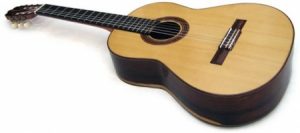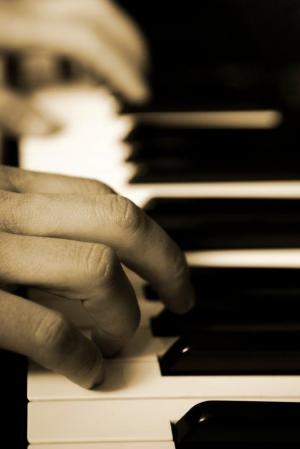Guitar history
 Many historians differently describe the history of the origin of modern guitar and its varieties. This is not surprising, because the first stringed-plucked instruments, which were the prototype of this guitar, appeared in ancient times, 3-4 thousand years BC.
Many historians differently describe the history of the origin of modern guitar and its varieties. This is not surprising, because the first stringed-plucked instruments, which were the prototype of this guitar, appeared in ancient times, 3-4 thousand years BC.
String plucked instruments equipped with a neck, appeared in ancient times. They form a family of lute in the broad sense of the word. The earliest surviving evidence is the sculptural images of Mesopotamia, which date back to about 2 millennium BC. er
They depict tools with a small body, which was made of tortoise-shell or pumpkin (covered, in all likelihood, leather). Similar kinds of instruments exist in our days in some countries: in the Balkans – tamburitsa, in Iran – sitar, in Turkey – saz, in Greece – bazookas. A two-stringed dutar also appears in Central Asia and in the north of India (it is used today in Iran, Uzbekistan, Tajikistan, Turkmenistan).
It has a rounded down and truncated body at the top and a long neck, into which the pegs are screwed.
The decisive moment in the history of the development of the instrument is the emergence of a new resonator body, which now consists of three parts: the deck, the top deck, and two shells that connect them. This stage begins in China in the III or IV century AD. er With the emergence of the tools of the yuan (nowadays not used) and Yukina, the upper deck of which is made of solid wooden plate.
Since that time, guitar-like instruments have spread widely in the Middle East. A beautiful example of one of these instruments was captured on the frieze of the Ertam Buddhist monastery near Termez (Uzbekistan), a fragment of which is stored in the St. Petersburg Hermitage Museum. However, there is still no exact dating of this frieze: it can be attributed to the period between the 1st century BC. er and III century n. er In ancient China, various types of lute with a long neck are widely used. Particularly attracted the attention of the so-called nefer (which means “beauty”). This instrument, with its almond-shaped, elongated body, can be considered one of the predecessors of our guitar. The insufficiency and fragmentation of reliable data makes it difficult to scientifically study the history of the guitar. Most of all, we tend to think that she was born in the Middle East and from there spread throughout Asia and Europe.
An important role in this process belongs to Egypt. According to K. Omo, “since the 9th century in the west of this country, the European lute is called kita”
On the ancient Egyptian pyramids and Assyrian architectural monuments there are hieroglyphs representing the instrument nablu, in the form of a vaguely resembling a guitar. Interestingly, the same hieroglyph of the ancient Egyptians denoted the concepts of “good”, “good”, “beautiful.”
In Mesopotamia and Egypt, some varieties of kifar (including the Egyptian Nabla and the Arabian el-aud) received further constructive development and spread throughout the Mediterranean coast as early as the 3rd – 2nd millennia BC. So far in the countries of Asia Minor there is a musical instrument “kinira”, akin to the guitar.
In ancient Greece, the most popular musical instruments were kitara (kitarra), lira, harp, pandora.
In the first centuries of the new era in the Mediterranean countries of Europe, Latin guitar, akin to Greek, was common. The closest relative of the guitar, the lute, was also known. The name “lute” itself comes from the Arabic word “el-aud”, which means “wooden” or “euphonic”.
In addition, the relationship between the nefer and the first instruments depicted in Spanish manuscripts is obvious. The invasion of the Arabs could have served – this also applies to the lute – as a link factor between North Africa and southern Europe; but one cannot exclude a definite influence of Asia Minor through the Greco-Romanesque world.
The Latin word cithara is derived from the Greek word cithar, and long before the Middle Ages it is used to designate types of guitar, like kitaire, quitaire, quitarre, put into use after 1250.
Unfortunately, this precious document constitutes a single case. The images of instruments that are closest to him in time, the predecessors of the guitar, are found only in the 10th and 11th centuries in Spain. Their design does not look so developed.
Until the 16th century, the guitar was three- and four-stringed. They played on it with their fingers and plectrum (bone and tortoise plate).
In the 16th century, a five-string guitar appeared in Spain, and from that time on it became known as the Spanish guitar. Strings were set double, sometimes the first string (“singing”) was single. Of all European countries, the guitar was most widely used in Spain, where it became a truly popular instrument.
With the advent of the fifth string and the increase in its artistic and performing abilities, the guitar begins to successfully compete with the lute and vihuela, its predecessor, and gradually push them out of musical use.
A number of talented virtuosos and composites appear.


